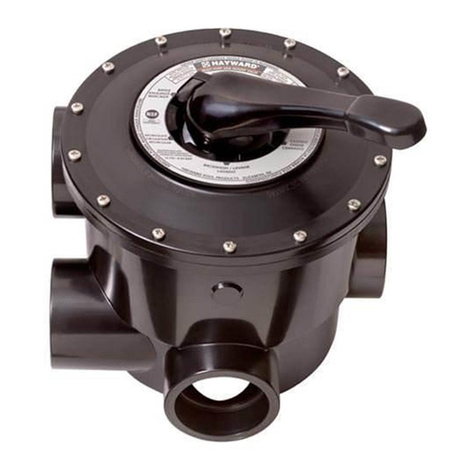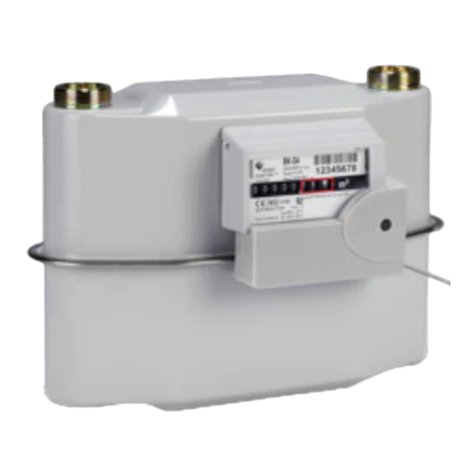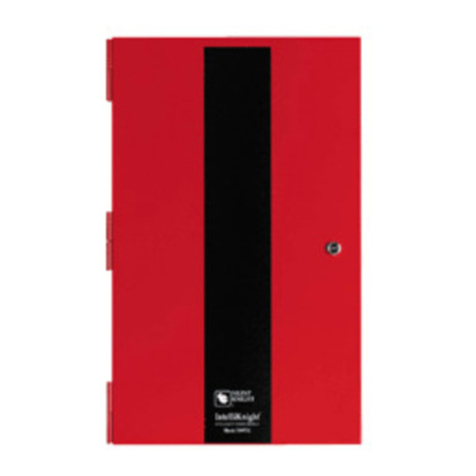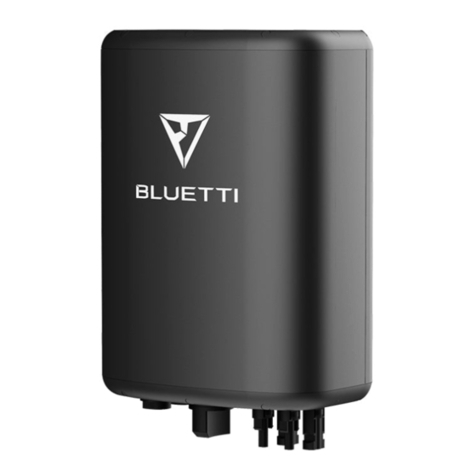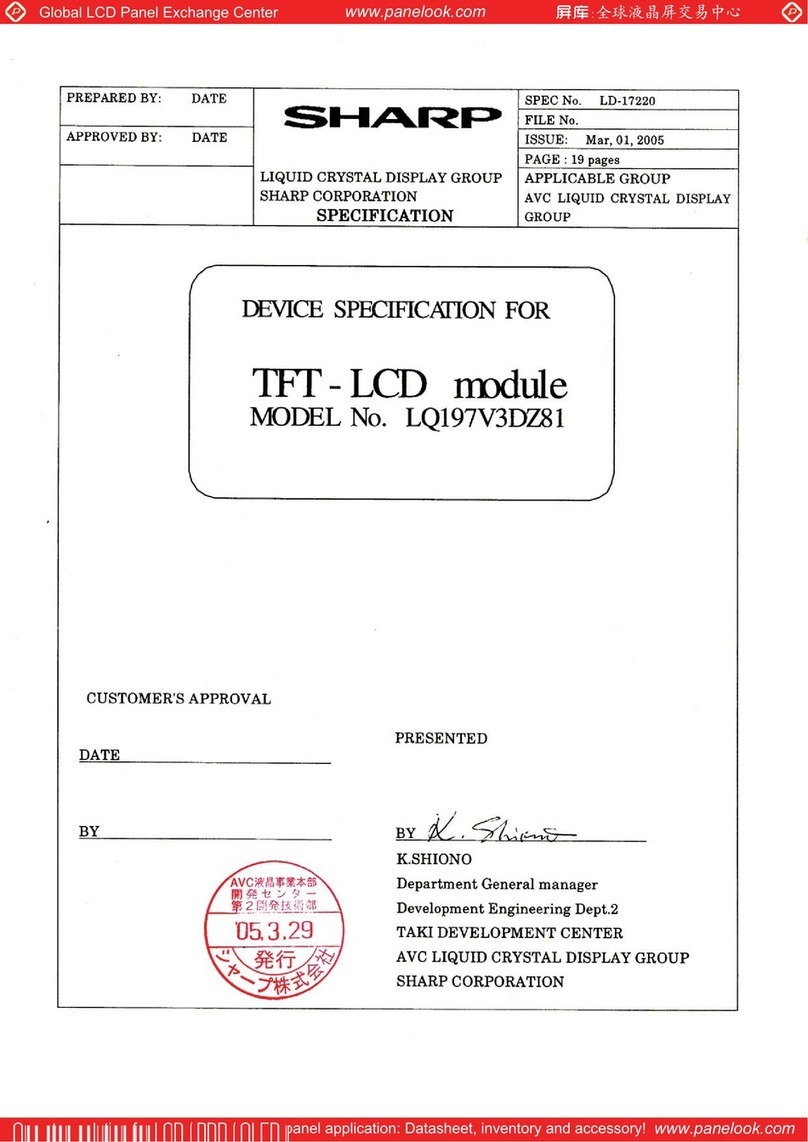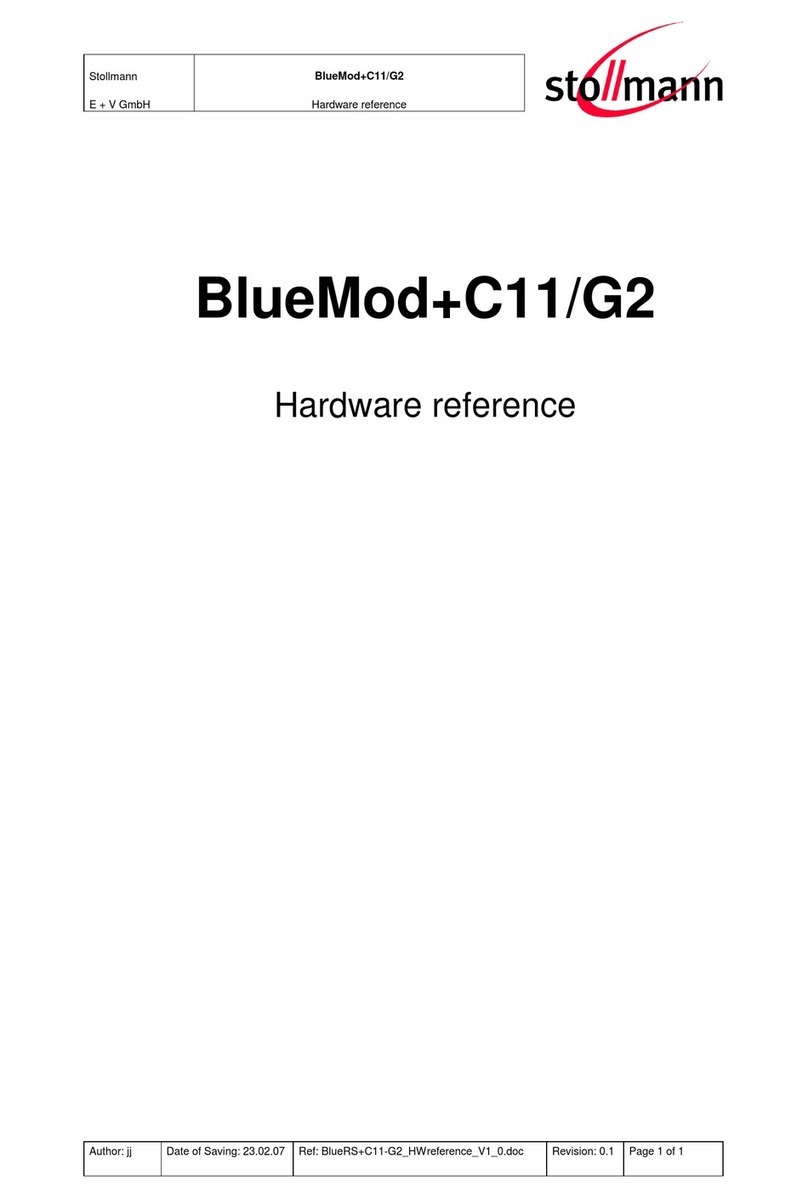ELECTRONIC ASSEMBLY DISPLAY VISIONS EA eDIP Series User manual

3.2“ TFT CONTROL UNIT
320x240 BUILT-IN INTELLIGENCE
Issue 4.2018
FEATURES
*TFT-GRAFIKDISPLAY WITH BUILD-IN GRAPHIC FUNCTIONS
*320x240 DOTS, 16-BIT COLOR (65.536 COLORS) WITH LED-BACKLIGHT
*4MB ON BOARD FLASH FOR FONTS, PICTURES, ANIMATIONS AND MACROS
*POWER SUPPLY WIDE RANGE +3,3V / 160mA ... +5V / 120mA
*8 PRE-DEFINED FONTS, CAN BE EXPANDED
*FONT ZOOM FROM 2MM TO ABOUT 80MM, TURNABLE IN 90° STEPS
*3 DIFFERENT INTERFACES ON BOARD: RS-232, I²C-BUS OR SPI-BUS
*POSITIONING ACCURATE TO THE PIXEL WITH ALL FUNCTIONS
*DRAW LINE, PLACE A DOT, AREA, BARGRAPH...
*ROTARY AND POINTER INSTRUMENTS
*PICTURES AND ANIMATIONS
*MIX TEXT AND GRAPHIC
*MULTI-LINGUAL WITH MACRO PAGES
*BACKLIGHT BRIGHTNESS BY SOFTWARE
*ANALOGUE TOUCH PANEL: VARIABLE GRID
*FREE DEFINABLE KEY AND SWITCH
*8 DIGITAL IN- AND 8 DIGITAL OUTPUTS
*2 ANALOGUE INPUTS, COMFORTABLE TO USE
Dimension:
82,0x60,5x12mm
WORLD NEW !
ORDERING CODES
DISPLAYS
TFT 320x240 DOTS, WHITE LED BACKLIGHT EA eDIPTFT32-A
AS ABOVE, BUT WITH TOUCH PANEL EA eDIPTFT32-ATP
STARTERKIT
INCLUDES EA eDIPTFT32-ATP AND EVALUATION BOARD WITH USB
FOR DIRECT CONNECTION TO PC AND INTERFACE BOARDS FOR
CONNECTION WITH YOUR HOST SYSTEM EA EVALeDIPTFT32
ADDTIOTNAL PARTS
MOUNTING BEZEL (ALUMINIUM), BLACK ANODIZED EA 0FP322-32SW
SOCKET 1x20, 4.5mm HIGH (1 piece) EA B254-20

Printing and typographical errors reserved.
ELECTRONIC ASSEMBLY reserves the right to change specifications without prior notice.
Page 2
EA eDIPTFT32-A
CONTENT
GENERAL .................................................................................................................................... 3
RS-232 ......................................................................................................................................... 4
RS-485, USB ................................................................................................................................ 5
SPI ............................................................................................................................................... 6
I²C ................................................................................................................................................ 7
ANALOGUE / DIGITAL IN- AND OUTPUT ................................................................................... 8
MATRIX KEYPAD ......................................................................................................................... 9
SOFTWARE PROTOCOL ................................................................................................... 10 - 11
TERMINAL MODE, COMMAND TRANSFER ............................................................................ 12
COMMANDS / FUCTIONS IN TABULAR FORMAT ........................................................... 13 - 17
TOUCH PANEL .......................................................................................................................... 18
RESPONSES OF THE CONTROL PANEL ................................................................................ 19
CHARACTER SET .............................................................................................................. 20 - 22
COLORS .................................................................................................................................... 22
FRAMES, KEY STYLE AND PATTERN .............................................................................. 23 - 24
INSTRUMENTS .................................................................................................................. 24 - 25
PROGRAMMING FONTS, PICTURES, ANIMATIONS .............................................................. 26
BITMAPS AS BUTTONS ............................................................................................................ 27
MACROS, MULTI-LINGUAL, MACRO PAGES .................................................................... 28 - 29
ELECTRICAL CHARACTERISTICS .......................................................................................... 30
DIMENSION, MOUNTING PANEL ...................................................................................... 31 - 32
Documentation of revision
Date Type Old New Reason / Description
February, 2010 0.1 preliminary version
February, 2011 1.0 - Instrument
- WinFonts 1st. Edition
January, 2012 1.1 - StringTable
- Draw a X/Y-graph (#GX, #GY, #GS) new functions

Page 3
Printing and typographical errors reserved.
ELECTRONIC ASSEMBLY reserves the right to change specifications without prior notice.
EA eDIPTFT32-A
GENERAL
The EA eDIP series of displays are the world’s first displays with integrated intelligence. In addition
to a variety of integrated fonts that can be used with pixel accuracy, they offer a whole range of
sophisticated graphics functions.
They are controlled via one of the 3 integrated interfaces: RS-232, SPI or I²C. The displays are
“programmed” by means of high-level language-type graphics commands. There is no longer any
need for the time-consuming programming of character sets and graphics routines. The ease of use
of this display with its touch panel dramatically reduces development times.
HARDWARE
The display is designed to work at an operating voltage between +3.3V to +5V.
Data transfer is either serial and asynchronous in RS-232 format or synchronous via the SPI or I²C
specification. To improve data security, a simple protocol is used for all types of transfer.
ANALOGUE TOUCH PANEL
All versions are also available with an integrated touch panel:You can make entries and menu or bar
graph settings by touching the display.The labeling of the “keys” is flexible and can also be changed
during runtime (different languages, icons). The drawing of the individual “keys” and the labeling is
handled by the integrated software.
LED ILLUMINATION
All displays are equipped with modern, energy-saving LED illumination. Brightness can be varied
0~100% by command.
In 24-hour operation, the illumination should be dimmed or switched off as often as possible to
increase their lifetime.
SOFTWARE
This display is programmed by means of commands, such as
Draw a rectangle from (0,0) to (319,239)
.
No additional software or drivers are required. Strings and images can be placed with pixel accuracy.
Text and graphics can be combined at any time. Different character sets can be used at same time.
Each character set and the images can be zoomed from 2 to 8 times and rotated in 90° steps. With
the largest character set, the words and numbers displayed will fill the screen.
ACCESSORIES
Evaluation-Board (Programmer) for internal data flash memory
The display is shipped fully programmed and with all fonts. The additional Evaluation-Board is thus
generally not required.
However, if the internal character sets have to be changed or extended, or if images or macros have
to be stored internally, the Evaluation-Board EA 9777-2USB, which is available as an accessory, will
burn the data/images you have created into the on-board data flash memory (4 MB) permanently.
The Evaluation-Board runs under Windows and is connected to the PC’s USB interface. It is shipped
with an interface cable and the installation software. The Evaluation-Board is equipped with serveral
LEDs, pushbottons and potentiometer to test all peripherial modes of the eDIP.
Interface-Expansion for Evaluation-Board (included in the Starter-Kit):
Wtih the expansion EA 9777-2PE for the Evaluation-Board all interfaces of the display are made
available with the help from small adapter boards: RS-232, RS-485, SPI, I²C, RS-232 (CMOS level).
Further information you will find in the datasheet of the Evalution-Board.

Printing and typographical errors reserved.
ELECTRONIC ASSEMBLY reserves the right to change specifications without prior notice.
Page 4
EA eDIPTFT32-A
RS-232 INTERFACE
If the display is wired as shown
below, the RS-232 interface is
selected. The pin assignment is
specified in the table on the right.
The RxD andTxD lines lead CMOS
level (VDD) to a microcontroller, for
example, for direct connection.
If “genuine” RS-232 levels are
required (e.g. for connection to a
PC), an external level converter
(e.g. MAX232) is required.
Note:
The pins BAUD 0 to 2, ADR 0 to 2, DPOM,
DPROT and TEST/SBUF have an internal
pullup, which is why only the LO level
(0=GND) is to be actively applied. These
pins must be left open for a Hi level.
For RS232 operation (without
addressing) the pins ADR 0 to ADR 2
must be left open.
On pin 20 (SBUF) the display indicates
with a low level that data is ready to be
retrieved from the internal send buffer.
The line can be connected to an interrupt input
of the host system, for example.
BAUD RATES
The baud rate is set by means of pins 6, 7 and 8 (baud 0 to 2). The data
format is set permanently to 8 data bits, 1 stop bit, no parity.
RTS/CTS handshake lines are not required. The required control is
taken over by the integrated software protocol (see pages 10 and 11).
application example
Pinout eDIPTFT32-A: RS-232/RS-485 mode
Pin Symbol In/Out Function Pin Symbol In/Out Function
1GND Ground Potential for logic (0V) 21 GND Ground (=Pin 1)
2VDD Power supply for logic (+3,3V ... +5V) 22 VDD Power supply (=Pin 2)
3NC do not connect 23 AIN1 In analogue input 0..VDD
DC impedance 1MOhm
4NC do not connect 24 AIN2
5RESET In L: Reset 25 OUT1 / MO8
Out
8 digital outputs
maximum current:
IOL = IOH = 10mA
alternativ up to 8 matrix
keyboard output lines
(reduces the digital
output lines, see chapter
external keyboard)
6BAUD0 In Baud Rate 0 26 OUT2 / MO7
7BAUD1 In Baud Rate 1 27 OUT3 / MO6
8BAUD2 In Baud Rate 2 28 OUT4 / MO5
9ADR0 In Address 0 for RS-485 29 OUT5 / MO4
10 RxD In Receive Data 30 OUT6 / MO3
11 TxD Out Transmit Data 31 OUT7 / MO2
12 EN485 Out Transmit Enable for RS-485 driver 32 OUT8 / MO1
13 DPOM In L: disable PowerOnMacro
do not connect for normal operation 33 IN1 / MI8
In
8 digital inputs
open-drain with internal
pullup 20..50k
alternativ up to 8 matrix
keyboard input lines
(reduces the digital input
lines, see chapter
external keyboard)
14 ADR1 In Address 1 for RS-485 34 IN2 / MI7
15 ADR2 In Address 2 for RS-485 35 IN3 / MI6
16 BUZZ Out Buzzer output 36 IN4 / MI5
17 DPROT In L: Disable Smallprotokoll
do not connect for normal operation 37 IN5 / MI4
18 DNC Out L: internal, do not connect 38 IN6 / MI3
19 WP In L: Writeprotect for DataFlash 39 IN7 / MI2
20 TEST
SBUF
IN
Out
open-drain with internal pullup 20..50k
IN (Power-On) L: Testmode
OUT L: data in sendbuffer
40 IN8 / MI1
Baud Rates
Baud0 Baud1 Baud2 data format
8,N,1
100 2400
010 4800
110 9600
001 19200
101 38400
011 57600
111 115200
000 230400

Page 5
Printing and typographical errors reserved.
ELECTRONIC ASSEMBLY reserves the right to change specifications without prior notice.
EA eDIPTFT32-A
APPLICATION EXAMPLE: RS-485 INTERFACE
With an external converter (e.g.
SN75176), the EA eDIP can be
connected to a 2-wire RS-485
bus. Large distances of up to
1200 m can thus be
implemented (remote display).
Several EA eDIP displays can
be operated on a single RS-485
bus by setting addresses.
APPLICATION EXAMPLE: USB INTERFACE
With an external converter (e.g. FT232R) from FTDI the eDIP can be connected to an USB-Bus.
Virtual-COM-Port drivers are available for different Systems on the FTDI Homepage:
http://www.ftdichip.com/drivers/vcp.htm
.
Addressing:
- Up to eight hardware addresses (0 to 7) can be set by means of Pins ADR0..ADR2
- The eDIP with the address 7 is selected and ready to receive after power-on.
- The eDIPS with the addresses 0 to 6 are deselcted after power-on
- Up to 246 further software addresses can be set by means of the ‘#KA adr’ command in the power-on macro (set eDIP externally to address 0)
application example
application example
application example
APPLICATION EXAMPLE „REAL“ RS-232 INTERFACE
The eDIP fits for direct
connection to a RS-232
interface with CMOS
level (VDD).
If you have an interface
with ±12V level, an
external levelshifter is
needed

Printing and typographical errors reserved.
ELECTRONIC ASSEMBLY reserves the right to change specifications without prior notice.
Page 6
EA eDIPTFT32-A
SPI INTERFACE
If the display is wired as shown
below, SPI mode is activated.
The data is then transferred via
the serial, synchronous SPI
interface.
The transfer parameter will be
set via the pins DORD, CPOL
and CPHA.
Note:
The pins DORD, CPOL, CPHA, DPOM, DPROT and TEST/SBUF have an internal pullup, which is why only the LO level
(0=GND) is to be actively applied. These pins must be left open for a Hi level.
On pin 20 (SBUF) the display indicates with a low level that data is ready to be retrieved from the internal send buffer.
The line can be connected to an interrupt input of the host system, for example.
DATA TRANSFER SPI
Write operation: a clock rate up to 200 kHz is allowed
without any stop. Together with a pause of 100 µs
between every data byte a clock rate up to 3 MHz can
be reached.
Read operation: to read data (e.g. the „ACK“ byte) a
dummy byte (e.g . 0xFF) need to be sent.
Note that the EA eDIP for internal operation does need
a short time before providing the data; therefore a short
pause of min. 6µs (no activity of CLK line) is needed for
each byte.
Pinout eDIPTFT32-A: SPI mode
Pin Symbol In/Out Function Pin Symbol In/Out Function
1 GND Ground Potential for logic (0V) 21 GND Ground (=Pin 1)
2 VDD Power supply for logic (+3,3V ... +5V) 22 VDD Power supply (=Pin 2)
3NC do not connect 23 AIN1 In analogue input 0..VDD
DC impedance 1MOhm
4NC do not connect 24 AIN2
5RESET In L: Reset 25 OUT1 / MO8
Out
8 digital outputs
maximum current:
IOL = IOH = 10mA
alternativ up to 8 matrix
keyboard output lines
(reduces the digital
output lines, see chapter
external keyboard)
6SS In Slave Select 26 OUT2 / MO7
7MOSI In Serial In 27 OUT3 / MO6
8MISO Out Serial Out 28 OUT4 / MO5
9CLK In Shift Clock 29 OUT5 / MO4
10 DORD In Data Order (0=MSB first; 1=LSB first) 30 OUT6 / MO3
11 SPIMO In connect to GND for SPI interface 31 OUT7 / MO2
12 NC do not connect 32 OUT8 / MO1
13 DPOM In L: disable PowerOnMacro
do not connect for normal operation 33 IN1 / MI8
In
8 digital inputs
open-drain with internal
pullup 20..50k
alternativ up to 8 matrix
keyboard input lines
(reduces the digital input
lines, see chapter
external keyboard)
14 CPOL In Clock Polarity (0=LO 1=HI when idle) 34 IN2 / MI7
15 CPHA In Clock Phase sample 0=1st;1=2nd edge 35 IN3 / MI6
16 BUZZ Out Buzzer output 36 IN4 / MI5
17 DPROT In L: Disable Smallprotokoll
do not connect for normal operation 37 IN5 / MI4
18 DNC Out L: internal, do not connect 38 IN6 / MI3
19 WP In L: Writeprotect for DataFlash 39 IN7 / MI2
20 TEST
SBUF
IN
Out
open-drain with internal pullup 20..50k
IN (Power-On) L: Testmode
OUT L: data in sendbuffer
40 IN8 / MI1
application example

Page 7
Printing and typographical errors reserved.
ELECTRONIC ASSEMBLY reserves the right to change specifications without prior notice.
EA eDIPTFT32-A
application example
I²C-BUS INTERFACE
If the display is wired as
shown below, it can be
operated directly on an I²C
bus.
8 different base addresses
and 8 slave addresses can
be
selected on the display.
Data transfer is possible at
up
to 100 kHz. However, if
pauses of at least 100 µs are
maintained between the
individual bytes during
transfer, a byte can be
transferred at up to 400 kHz.
DATA TRANSFER I²C INTERFACE
principle I2C-bus transfer:
- I²C-Start
- Master-Transmit: EA eDIP-I²C-address (e.g. $DE), send smallprotocol package (data)
- I²C-Stop
- I²C-Start
- Master-Read: EA eDIP-I²C-Address (e.g. $DF), read ACK-byte and opt. smallprotocoll package (data)
- I²C-Stop
Read operation: for internal operation the
EA eDIP does need a short time before
providing the data; therefore a short pause of
min. 6µs is needed for each byte (no activity of
SCL line).
Note:
The pins BA0..2, SA0..2, DPOM, DPROT and TEST/SBUF have an internal pullup, which is why only the LO level
(0=GND) is to be actively applied. These pins must be left open for a Hi level.
On pin 20 (SBUF) the display indicates with a low level that data is ready to be retrieved from the internal send buffer.
The line can be connected to an interrupt input of the host system, for example.
Pinout eDIPTFT32-A: I2C mode
Pin Symbol In/Out Function Pin Symbol In/Out Function
1 GND Ground Potential for logic (0V) 21 GND Ground (=Pin 1)
2 VDD Power supply for logic (+3,3V ... +5V) 22 VDD Power supply (=Pin 2)
3NC do not connect 23 AIN1 In analogue input 0..VDD
DC impedance 1MOhm
4NC do not connect 24 AIN2
5RESET In L: Reset 25 OUT1 / MO8
Out
8 digital outputs
maximum current:
IOL = IOH = 10mA
alternativ up to 8 matrix
keyboard output lines
(reduces the digital
output lines, see chapter
external keyboard)
6BA0 In Basic Address 0 26 OUT2 / MO7
7BA1 In Basic Address 1 27 OUT3 / MO6
8SA0 In Slave Address 0 28 OUT4 / MO5
9SA1 In Slave Address 1 29 OUT5 / MO4
10 SA2 In Slave Address 2 30 OUT6 / MO3
11 BA2 In Basic Address 2 31 OUT7 / MO2
12 I2CMO In connect to GND for I²C interface 32 OUT8 / MO1
13 DPOM In L: disable PowerOnMacro
do not connect for normal operation 33 IN1 / MI8
In
8 digital inputs
open-drain with internal
pullup 20..50k
alternativ up to 8 matrix
keyboard input lines
(reduces the digital input
lines, see chapter
external keyboard)
14 SDA Bidir. Serial Data Line 34 IN2 / MI7
15 SCL In Serial Clock Line 35 IN3 / MI6
16 BUZZ Out Buzzer output 36 IN4 / MI5
17 DPROT In L: Disable Smallprotokoll
do not connect for normal operation 37 IN5 / MI4
18 DNC Out L: internal, do not connect 38 IN6 / MI3
19 WP In L: Writeprotect for DataFlash 39 IN7 / MI2
20 TEST
SBUF
IN
Out
open-drain with internal pullup 20..50k
IN (Power-On) L: Testmode
OUT L: data in sendbuffer
40 IN8 / MI1
all pins open: Write $DE
Read $DF
I²C - Address
Pin 11,7,6 Base
address
I²C address
BA2 BA1 BA0 D7 D6 D5 D4 D3 D2 D1 D0
LLL $10 0001
S
A
2
S
A
1
S
A
0
R
W
L L H $20 0 0 1 0
L H L $30 0 0 1 1
L H H $40 0 1 0 0
H L L $70 0 1 1 1
HLH $90 1001
H H L $B0 1 0 1 1
HHH $D0 1 1 0 1

Printing and typographical errors reserved.
ELECTRONIC ASSEMBLY reserves the right to change specifications without prior notice.
Page 8
EA eDIPTFT32-A
DIGITAL INPUT AND OUTPUT
The EA eDIP is featured with 8 digital input and 8 digital output lines (CMOS level,
grounded).
8 outputs (Pin 25-32)
Each line can be controlled individually using the „ESC Y W“ command. A maximum
current of 10mA can be switched per line. This give the opportunity to drive a low
power LED in direct way.To source higher current please use an external transistor.
8 inputs (Pin 33-40)
Each input provides an internal 20..50 kΩpull-up resistor, so it is possible to connect a key
or switch directly between input and GND. The inputs can be queried and evaluated directly
via the serial interface („ESC Y R“).
In addition to that every port change may start an individual port - or bit- macro (see p. 28). The
command "ESC Y A 1" activates automatic port query. Every alteration of inputs firstly calls bit macros
and afterwards port macros. If there is no definied macro, the new status is transfered into the send
buffer (refer to p. 19).
Note: The logic circuitry is designed for slow operations; in other words, more than 3 changes per
second cannot be easily executed.
ANALOGUE INPUT AIN1 AND AIN2 (PIN 23+24)
For analogue measurement 2 inputs with a range of 0..VDD are available. Each input is grounded
(GND) and DC impedance is 1MΩ. Please make sure that only positive voltages will be supplied
there. Internal resolution is 10 Bit, equal to a 3-digit DVM modul. Linearity (after adjustment) is around
0.5%.
Adjustment
Analogue inputs are not calibrated when shipped out. A procedure for adjustment may be like that:
1.) Put a well known voltage within a range of 2-VDD to analogue input (example: 3,0V, AIN1)
2.) Run command for calibration (see page 15). Example: „ESC V @ 1 3000“.
Each input query can be done via serial interface or directly shown on display (as digits or bargraph
in various colors and sizes).
Best way for direct visualisation are Process-macros or one of Analogue-macros (e.g. starting at every
voltage change, or above/below a limit).
Both input lines are scaleable from 0 to ±9999.9. Scaling will be done via definition at 2 voltages
„value1=string1;value2=string2“ (see table on page 16).
EXTENDED OUTPUTS
It is possible to connect 1 to 32 chips like 74HC4094 to the eDIP (OUT1...OUT3), this is why it is attainable
to have 8 to 256 additional outputs.The command "ESCY E n1 n2 n3" (see p. 17) provides a comfortable
way to control the outputs.

Page 9
Printing and typographical errors reserved.
ELECTRONIC ASSEMBLY reserves the right to change specifications without prior notice.
EA eDIPTFT32-A
EXTERNAL KEYBOARD
A keyboard (anything from individual keys to a 8x8 matrix keyboard) can be connected to the I/O- ports.
The command ‘ESC Y M n1 n2 n3’ defines the count of input lines (n1=1..8) and output lines (n2=1..8).
n3 set debounce function with 10ms steps (n3=0..15). Please note that count of digital input and output
lines will be reduced while connecting an external keyboard at the same port.
Each key is connected with 1 output and 1 input. All inputs are terminated with a 20..50kΩpull-up
resistor. For double-keytroke function decoupling of outputs is necessary. For that please use schottky
diodes (e.g. BAT 46).
Transmitting the keystrokes
At each keystroke, the associated key number (1..64) is transmitted or if a corresponding Matrix-
Macro is defined, Matrix-Macro will be started. The release of the key is not transmitted. If the release
of the key is to be transmitted as well, this can be done by defining Matrix-Macro no. 0.
(see page 17: Responses of EA eDIP).
2x2 Matrix 1x4 Matrix 4x0 Matrix 4x4 Matrix
Examples
- 2x2 matrix: Command ‘ESC Y M 2 2 ..’ defines the 2x2 matrix. Keypad will need input lines MI1, MI2
and output lines MO1, MO2. Output lines are decoupled by diodes; this is for double
keystrokes necessary. 6 input and 6 output lines remain free for other requirements.
- 1x4 matrix: Command‘ESCY M 1 4 ..’ defines the 1x4 matrix. Keypad will need output lines MO1..MO4
and a single input line MI1. With that connection 7 input and 4 output lines remain free for
other requirements.
- 4x0 matrix: Using one single output only (physically 4x1 Matrix), all keys can switch to GND. So no
output line is necessary and comman ‘ESC Y M 4 0 ..’ defines 4 input lines onyl. With that
connection 4 input and 8 output lines remain free for other requirements.
- 4x4 matrix: Command ‘ESC Y M 4 4 ..’ defines the 4x4 matrix. Keypad will need input lines MI1..MI4
and output lines MO1..MO4. Output lines are decoupled by diodes; this is for double
keystrokes necessary. 4 input and 4 output lines remain free for other requirements.
.
Calculating of key numbers:
Key_number = (output-1) * count_of_inputs + input (output = MOx, input = MIx).

Printing and typographical errors reserved.
ELECTRONIC ASSEMBLY reserves the right to change specifications without prior notice.
Page 10
EA eDIPTFT32-A
DATA TRANSFER PROTOCOL (SMALL PROTOCOL)
The protocol has an identical structure for all 3 interface types: RS-232, SPI and I²C. Each data
transfer is embedded in a fixed frame with a checksum (protocol package). The EA eDIPTFT32-A
acknowledges this package with the character <ACK> (=$06) on successful receipt or <NAK> (=$15)
in the event of an incorrect checksum or receive buffer overflow. In the case of <NAK>, the entire
package is rejected and must be sent again.
Receiving the <ACK> byte means only that the protocol package is ok,
there is no syntax check for the command.
Note: it is neccessary to read the <ACK> byte in any case. If the host
computer does not receive an acknowledgment, at least one byte is
lost. In this case, the set timeout has to elapse before the package is
sent again. The raw data volume per package is limited to 255 bytes
(len <= 255). Commands longer than 255 bytes (e.g. Load image ESC
UL...) must be divided up between a number of packages. All data in
the packages are compiled again after being correctly received by the
EA eDIP.
DEACTIVATING THE SMALL PROTOCOL
For tests the protocol can be switched off with an L level at
pin 17 = DPROT. In normal operation, however, you are urgently advised
to activate the protocol. If you do not, any overflow of the receive buffer
will not be detected.
><DC1> len data... bcc
<<ACK>
><DC2> 1 S bcc
<<ACK>
<<DC1> len data... bcc
Command/data to the display
Request for content of send buffer
BUILDING THE SMALL PROTOCOL PACKAGES
<DC1> = 17(dez.) = $11
<ACK> = 6(dez.) = $06
len = count of user data (without <DC1>, without checksum bcc)
bcc = 1 byte = sum of all bytes incl. <DC1> and len, modulo 256
The user data is transferred framed by <DC1>,
the number of bytes (len) and the checksum
(bcc). The display responds with <ACK>.
The command sequence <DC2>, 1, S, bcc
empties the display’s send buffer. The display
replies with the acknowledgement <ACK> and
the begins to send all the collected data such
as touch keystrokes.
<DC2> = 18(dez.) = $12 1 = 1(dez.) = $01 S = 83(dez.) = $53
<ACK> = 6(dez.) = $06
len = count of user data (without <DC1>, without checksum bcc)
bcc = 1 byte = sum of all bytes incl. <DC1> and len, modulo 256
void SendData(unsigned char *buf, unsigned char
len)
{
unsigned char i, bcc;
SendByte(0x11); // Send DC1
bcc = 0x11;
SendByte(len); // Send data length
bcc = bcc + len;
for(i=0; i < len; i++) // Send buf
{ SendByte(buf[i]);
bcc = bcc + buf[i];
}
SendByte(bcc); // Send checksum
}C-Code to transmit data package
Clear display and draw a line from 0,0 to 319,239
> <DC1> len ESC D L ESC G D 0 0 319 239 bcc
$11 $0E $1B $44 $4C $1B $47 $44 $00 $00 $00 $00 $3F $01 $EF $00 $9F
< <ACK>
$06
Example for a complete datapackage

Page 11
Printing and typographical errors reserved.
ELECTRONIC ASSEMBLY reserves the right to change specifications without prior notice.
EA eDIPTFT32-A
><DC2> 3 D packet size for
send buffer timeout bcc
<<ACK>
><DC2> 1 R bcc
<<ACK>
<<DC1>
<DC2> len data... bcc
Repeat the last package
Protocol settings
<DC2> = 18(dec.) = $12 3 = 3(dez.) = $03 D = 68(dez.) = $44
packet size for send buffer = 1..128 (standard: 128)
timeout = 1..255 in 1/100 seconds (standard: 200 = 2 seconds)
bcc = 1 byte = sum of all bytes incl. <DC2>, modulo 256
<ACK> = 6(dec.) = $06
Adressing (only for RS232/RS485)
><DC2> 3 A select or
deselect adr bcc
<<ACK>
<DC2> = 18(dez.) = $12 3 = 3(dez.) = $03 A = 65(dez.) = $41
select or deselect: 'S' = $53 or 'D' = $44
adr = 0..255
bcc = 1 byte = sum of all bytes incl. <DC2> and adr, modulo 256
<ACK> = 6(dec.) = $06
<DC2> = 18(dez.) = $12 1 = 1(dez.) = $01 R = 82(dez.) = $52
<ACK> = 6(dez.) = $06
<DC1> = 17(dez.) = $11
len = count of user data in byte (without ckecksum, without <DC1> or <DC2>)
bcc = 1 byte = sum of all bytes incl. <DC2> and len, modulo 256
If the most recently requested package contains
an incorrect checksum, the entire package can
be requested again. The reply can then be the
contents of the send buffer (<DC1>) or the
buffer/protocol information (<DC2>).
This is how the maximum package size that can
be sent by the display can be limited.The default
setting is a package size with up to 128 bytes of
user data.The timeout can be set in increments
of 1/100 seconds.The timeout is activated when
individual bytes get lost.The entire package then
has to be sent again.
This command can be used to select or deselect
the eDIP with the address adr.
Request for protocol settings
<DC2> = 18(dez.) = $12 1 = 1(dez.) = $01 P = 80(dez.) = $50
<ACK> = 6(dez.) = $06
max. packet size = count of maximum user data for 1 package (eDIPTFT32-A = 255)
akt. send packet size = current package size for send
akt. timeout = current timeout in 1/100 seconds
bcc = 1 byte = sum of all bytes incl. <DC2>, modulo 256
><DC2> 1 P bcc
<<ACK>
<<DC2> 3max.
packet size
akt. send
packet size akt. timeout bcc
This command is used to query protocol
settings.
><DC2> 1 I bcc
<<ACK>
<<DC2> 2send buffer
bytes ready
receive buffer
bytes free bcc
Request for buffer information
<DC2> = 18(dez.) = $12 1 = 1(dez.) = $01 I = 73(dez.) = $49
<ACK> = 6(dez.) = $06
send buffer bytes ready = count of bytes stored in send buffer
receive buffer bytes free = count of bytes for free receive buffer
bcc = 1 byte = sum of all bytes incl. <DC2>, modulo 256
This command queries whether user data is
ready to be picked up an how full the display's
receive buffer is.

Printing and typographical errors reserved.
ELECTRONIC ASSEMBLY reserves the right to change specifications without prior notice.
Page 12
EA eDIPTFT32-A
USING THE SERIAL INTERFACE
The operating unit can be programmed by means of various integrated commands. Each command
begins with ESCAPE followed by one or two command letters and then parameters.
There are two ways to transmit commands:
1. ASCII mode
- The ESC character corresponds to the character ‘#’ (hex: $23, dec: 35).
- The command letters come directly after the ‘#’ character.
- The parameters are transmitted as plain text (several ASCII characters) followed by a separating
character (such as a comma ‘,’) - also after the last parameter e.g.: #GD0,0,319,239,
- Strings (text) are written directly without quotation marks and concluded with CR (hex: $0D) or LF
(hex: $0A).
2. Binär mode
- The escape character corresponds to the character ESC (hex: $1B, dec: 27).
- The command letters are transmitted directly.
- The coordinates xx and yy are transmitted as 16-bit binary values (first the LOW byte and then the
HIGH byte).
- All the other parameters are transmitted as 8-bit binary values (1 byte).
- Strings (text) are concluded with CR (hex: $0D) or LF (hex: $0A) or NUL (hex: $00).
No separating characters, such as spaces or commas, may be used in binary mode.
The commands require no final byte, such as a carriage return (apart from the string $00).
Terminal-Font 2: 8x16
TERMINAL MODE
When you switch the unit on, the cursor flashes in
the first line, indicating that the display is ready for
operation. All the incoming characters are displayed
in ASCII format on the terminal (exception:
CR,LF,FF,ESC,’#’). The prerequisite for this is a
working protocol frame or a deactivated protocol (see
pages 10 and 11).
Line breaks are automatic or can be executed by
means of the ‘LF’ character. If the last line is full, the
contents of the terminal scroll upward. The ‘FF’
character (page feed) deletes the terminal. The
character‘#’ is used as an escape character and thus
cannot be displayed directly on the terminal. If the
character ‘#’ is to be output on the terminal, it must
be transmitted twice: ‘##’. The size of the terminal-
window can be set by command 'ESC TW'.
Attention: Graphic commands are able to draw inside
terminal window. For example 'ESC DL' will delete
terminal window, too.

Page 13
Printing and typographical errors reserved.
ELECTRONIC ASSEMBLY reserves the right to change specifications without prior notice.
EA eDIPTFT32-A
ALL COMMANDS AT A GLANCE
The built-in intelligence allows an easy creation of your individual screen content. Below mentioned
commands can be used either directly via the serial interface (see page 12) or together with the
selfdefinable macro (see page 28).
EA eDIPTFT32-A: Terminal commands after
reset
Command Codes Remarks
Set terminal color ESC F T fg bg Preset color for terminal mode: fg= foreground color; bg= background color 8,1
Define window ESC T W n1 C L W H
The terminal output is executed with font n1: 1=8x8; 2=8x16 only within the window from
column C and line L (=upper-left corner) with a width of W and a height of H (specifications in
characters). Display organisation 480x272: C=1..60; L=1..34/17; 272x480: C=1..34; L=1..60/30
8x16
1,1
60,17
Form feed FF (dec:12) ^L The contents of the screen are deleted and the cursor is placed at pos. (1,1)
Carriage return CR (13) ^M Cursor to the beginning of the line on the extreme left
Line feed LF (dec:10) ^J Cursor 1 line lower, if cursor in last line then scroll
Position cursor
ESC T
PC L C=column; L=line; origin upper-left corner (1,1) 1,1
Cursor on/off Cn1 n1=0: Cursor is invisible; n1=1: Cursor flashes; 1
Save cursor position SThe current cursor position is saved
Restore cursor position RThe last saved cursor position is restored
Terminal off ATerminal display is switched off; outputs are rejected
Terminal on ETerminal display is switched on; on
Output version
ESC T
VThe version no. is output in the terminal e.g. "EA eDIPTFT43-A V1.0 Rev.A"
Output projectname JThe macrofile-projectname is output in the terminal e.g. "init / delivery state"
Output interface QThe used interface is output in the terminal e.g "RS232,115200 baud,ADR: $07"
Output informationen ESC T I The terminal is initialisized and cleared; the software version, hardware revision,
macrofile-projectname and CRC-checksum are output in the terminal
EA eDIPTFT32-A: Graphic commands after
reset
Command Codes Remarks
Display commands (effect on the entire display)
Set display color ESC F D fg bg Defines color 1..32 for display and areas: fg=foreground color; bg=background color 8,1
Delete display ESC
D
LDelete display contents (all pixels to background color)
Fill display ESC SFill display contents (all pixels to foreground color)
Fill display with color ESC Fn1 Fill complete display content with color n1=1..32
Invert display ESC IInvert display content
Commands for outputting strings
Set text color ESC F Z fg bg Color 1..32 (0=transparent) for string and character: fg=text color; bg=background color 8,0
Set font
ESC Z
Fn1 Set font with the number n1 3
Font zoom factor Zn1 n2 n1 = X-zoom factor (1x to 8x); n2 = Y-zoom factor (1x to 8x) 1,1
Additional width/height Yn1 n2 n1=0..15: additional width left/right; n2=0..15: additional height top/bottom 0, 0
Spacewidth Jn1 n1=0: use spacewidth from font; n1=1: same witdh as a number; n1>=2 width in dot 0
Text angle Wn1 Text output angle: n1=0: 0°; n1=1: 90°; n1=2: 180°; n1=3: 270° 0
Output string
L: left justified
C: centered
R: right justified
ESC Z
L
xx1 yy1 text
... NUL
A string (...) is output to xx1,yy1
end of string: 'NUL' ($00), 'LF' ($0A) or 'CR' ($0D)
several lines are separated by the character '|' ($7C, pipe)
the character '\' ($5C, backslash) cancles the special function of '|' and '\'
C
R
Output string
in an area
(since V1.2)
ESC Z B xx1 yy1 xx2 yy2 n1 text
... NUL
Output a string (...) inside area from xx1,yy1 to xx2,yy2 at position n1=1..9;
the area will be filled with background color;
n1=1: Top Left; n1=2: Top Center; n1=3: Top Right
n1=4: Middle Left; n1=5: Middle Center; n1=6: Middle Right
n1=7: Bottom Left; n1=8: Bottom Center; n1=9: Bottom Right
String for terminal ESC Z T text ... Command for outputting a string from a macro to the terminal
Draw straight lines and points
Set color for lines ESC F G fg bg Colors 1..32 (0=transparent): fg = color for line; bg = pattern background 8,1
Draw rectangle
ESC G
Rxx1 yy1 xx2 yy2 Draw four straight lines as a rectangle from xx1,yy1 to xx2,yy2
Draw straight line Dxx1 yy1 xx2 yy2 Draw straight line from xx1,yy1 to xx2,yy2
Continue straight line Wxx1 yy1 Draw a straight line from last end point to xx1, yy1
Draw point Pxx1 yy1 Set a point at coordinates xx1, yy1
Point size/line thickness Zn1 n2 n1 = X-point size (1 to 15); n2 = Y-point size (1 to 15); 1,1
Pattern Mn1 Set straight line/point pattern no. n1=1..255; 0=do not use pattern 0
Set start point ESC GSxx1 yy1 Set the last end point at coordinates xx1, yy1 for commands 'GW', 'GX' and 'GY' (since V1.2)
Draw X-Graph Xxs ya yy1 Draw graph with fix x-steps (xs=1..127 or 129..255 for neg. steps) and variable amount (ya=1..255)
of y-values (since V1.2)
Draw Y-Graph Yys xa xx1 Draw graph with fix y-steps (ys=1..127 or 129..255 for neg. steps) and variable amount (xa=1..255)
of x-values (since V1.2)
Change/draw rectangular areas
Delete area
ESC R
Lxx1 yy1 xx2 yy2 Delete an area from xx1,yy1 to xx2,yy2 (fill with background color)
Fill area Sxx1 yy1 xx2 yy2 Fill an area from xx1,yy1 to xx2,yy2 (fill with foreground color)
Fill area with color Fxx1 yy1 xx2 yy2 n1 Fill an area from xx1,yy1 to xx2,yy2 with color n1=1..32
Invert area Ixx1 yy1 xx2 yy2 Invert an area from xx1,yy1 to xx2,yy2
Copy area Cxx1 yy1 xx2 yy2 xx3 yy3 Copy an area from xx1,yy1 to xx2,yy2 to new position xx3,yy3
Patterncolor
ESC
F M fg bg Color 1..32 (0=transp.) for monochrome pattern: fg=foreground; bg=background color 8,1
Area with fill pattern RMxx1 yy1 xx2 yy2 n1 Draw an area from xx1,yy1 to xx2,yy2 with pattern n1
Draw box Oxx1 yy1 xx2 yy2 n1 Draw a rectangle xx1,yy1 to xx2,yy2 and fill with pattern n1
Set color for border
ESC
F R c1 c2 c3 Set color for border segments: c1=frame outside; c2=frame inside; c3=filling 8,1,1
Set border type REn1 n2 Set border type n1=1..255; border angle: n2=0: 0°; n1=1: 90°; n1=2: 180°; n1=3: 270° 1, 0
Draw border box Rxx1 yy1 xx2 yy2 Draw a border box from xx1,yy1 to xx2,yy2

Printing and typographical errors reserved.
ELECTRONIC ASSEMBLY reserves the right to change specifications without prior notice.
Page 14
EA eDIPTFT32-A
EA eDIPTFT32-A: Bitmap / Animation commands after
reset
Command Codes Remarks
Bitmap image commands
Set bitmap colors ESC F U fg bg painting color for monchrome bitmaps fg=foreground color; bg=background color 1,8
Image zoom factor
ESC U
Zn1 n2 n1 = X-zoom factor (1x to 8x); n2 = Y-zoom factor (1x to 8x) 1,1
Image angle Wn1 output angle of the image: n1=0: 0°; n1=1: 90°; n1=2: 180°; n1=3: 270° 0
Mirror Image Xn1 n1=0: normal display; n1=1: the image is mirrored horizontally 0
Transparency for
color bitmaps Tn1
n1=0: no transparency; show picture with all colors rectangular
n1=1: color of the first dot at top left side will be defined as transparent (like a mask)
n1=2: if defined - use transparent color from bitmap-file (.GIF .TGA .G16)
n1=3: replace transparent color from bitmap-file with actually background color
2
Load internal image ESC UIxx1 yy1 nr Load internal image with the no (0 to 255) from the data flash memory to xx1,yy1
Load image Lxx1 yy1 G16 data ... Load an image to xx1,yy1; see image structure (G16 format) for image data
RLE compression ESC U R the next hardcopy ('ESC U H xx1,yy1,xx2,yy2) is send with RLE compression (since V1.2)
Send hardcopy ESC U H xx1 yy1 xx2 yy2 After this command, the image extract is sent (to sendbuffer) in G16 format
Animation image commands
Set animation colors ESC F W fg bg color for monchrome animation images fg=foreground color; bg=background color 1,8
Animation zoom factor
ESC W
Zn1 n2 n1 = X-zoom factor (1x to 8x); n2 = Y-zoom factor (1x to 8x) 1,1
Animation angle Wn1 output angle of the animation image n1=0: 0°; n1=1: 90°; n1=2: 180°; n1=3: 270° 0
Mirror animation Xn1 n1=0: normal display; n1=1: the animation image is mirrored horizontally 0
Transparency for
color animation Tn1
n1=0: no transparency; show animation with all colors rectangular
n1=1: color of the first dot at top left side will be defined as transparent (like a mask)
n1=2: if defined - use transparent color from animation-file (.GIF .G16)
n1=3: replace transparent color from animation-file with actually background color
2
Load single image ESC W I xx1 yy1 n1 n2 Load from animation n1=0..255 the single image n2 to xx1,yy1
Define animationprocess ESC W D no xx1 yy1 n2 type time
Define an animationprocess no=1..4 at position xx1,yy1 (=left top edge) with
animation image n2=0..255.
type: 1=run once; 2=cyclically; 3=pingpong; 4=once backwards; 5=cyclic backwards
6=pingpong backwards; 7=manually (use command ESC W N|P|F|M)
time: 0=stop; 1..254=time in in 1/10 sec; 255=use time from animation-file
Change animation type
ESC W
Yno type Assign a new type=1..7 to animationprocess no=1..4
Change animation time Cno time Assign a new time=0..255 to animationprocess no=1..4
Next animation image Nno Show the next image from animationprocess no=1..4
Previous animation image Pno Show the previous image from animationprocess no=1..4
Show animation image Fno n2 Show image n2 from animationprocess no=1..4
Run to animation image Mno n2 Run animationprocess no=1..4 from actually image to image n2
Stop animationprocess Lno Stop animationprocess no=1..4 and clear last image with actually background color

Page 15
Printing and typographical errors reserved.
ELECTRONIC ASSEMBLY reserves the right to change specifications without prior notice.
EA eDIPTFT32-A
EA eDIPTFT32-A: Bargraph commands after
reset
Command Codes Remarks
Bargraph commands
Set color for bargraph ESC F B fg bg fc Colors: fg = foreground; bg = background; fc = color for frame 8,1,8
Bargraph pattern
ESC B
Mn1 Pattern for bargraph n1=1..255; n1=0 no pattern/solid (valid for type=0..3) 0
Bargraph border En1 Border for bargraph n1=1..255 (valid for type=4..7) 1
Bargraph linewidth Bn1 Linewidth for bargraph n1=1..255; n1=0 automatic (valid for type=2,3,6,7) 0
Define bargraph ESC B
R
L
O
U
no xx1 yy1 xx2 yy2 sv ev type
Define bargraph no=1..20 to L(eft), R(ight), O(up), U(down)
xx1,yy1,xx2,yy2 rectangle enclosing the bar graph.
sv, ev are the values for 0% and 100%.
type: 0=pattern bar; 1=pattern bar in rectangle;
type: 2=pattern line; 3=pattern line in rectangle;
type: 4=border bar; 5=border bar in rectangle;
type: 6=border line; 7=border line in rectangle;
no bar
defined
Update bargraph
ESC B
Ano val Set and draw the bargraph with the number no=1..20 to the new value val
Draw bargraph Nno Entirely redraw the bargraph with the number no=1..20
Send bargraph value Sno Send the current value of bargraph number no=1..20 to sendbuffer
Delete bargraph Dno n2
The definition of the bar graph with the number no=1..20 becomes invalid.
If the bar graph was defined as input with touch, this touch field will also be deleted.
n2=0: Bar graph remains visible; n2=1: Bar graph is deleted
User values - Format text output
User value color ESC F X fg bg Set color for bargraph user value; fg=foreground, bg=background color 8,1
User value font
ESC B
Fn1 Set font n1 for bargraph user value 5
User value zoom Zn1 n2 Set zoom factor for bargraph user value; n1=X-Zoom 1x..8x; n2=Y-Zoom 1x..8x 1,1
User value additional
width/height Yn1 n2 n1=0..15: additional width left/right;
n2=0..15: additional height top/bottom for bargraph user value; 0, 0
User value angle Wn1 Set writing angle for bargraph user value; n1=0: 0°; n1=1: 90°; n1=2: 180°; n1=3: 270°; 0°
User values / scaling ESC B X no xx1 yy1
For
mat
Str
ing
NUL
Define user value for bargraph no=1..20. Output is always right justified to xx1,yy1;
Format String: "bv1=uservalue1;bv2=uservalue2". 'NUL' ($00) = termination;
Assign two bar values (bv1,bv2 =0..254) to user defined values
max. range: 4 1/2 digits 19999 + decimal point ('.' oder ',') + sign
e.g. display "-123.4" for bar value bv1=0 and "567.8" for bar value bv2=100
Format String: "0=-123.4;100=567.8"
EA eDIPTFT32-A: Instrument commands after
reset
Command Codes Remarks
Define, use instruments
Definine instrument ESC I P n1 xx1 yy1 n2 n3 aw ew
Define instrument n1=1..4 an xx1,yy1 (=left top edge);
Use intrument image n2=0..255
Output angle n3=0: 0°; n3=1: 90°; n3=2: 180°; n3=3: 270°;
aw, ew (0..254) are start and endvalue (0% and 100%).
nothing
definied
Update instrument
ESC I
An1 val Update instrument with new value and redraw
Redraw instrument Nn1 Redraw entirely instument n1=1..4
Send instrument value Sn1 Send actual instrument value n1=1..4 to send buffer
Delete instrument Dn1 n2
The definition of the instrumets gets invalid. If the instrument was adjustable by touch,
the touch area will be deleted, too.
n2=0: Instrument stays visible; n2=1: Instrument is deleted completely
User values - formatted string output
User value color ESC F I vf hf Set color 1..32 for instrument user value fg=foreground; bg=background color 8,1
User value font
ESC I
Fn1 Set font nr for instrument user value 5
User value zoom Zn1 n2 Set zoom factor for instrument user value: n1=X-Zoom 1x..8x; n2=Y-Zoom 1x..8x 1,1
User value additional
hight/width Yn1 n2 n1=0..15: additional width left/right;
n2=0..15: additional height top/bottom for instrument user value; 0, 0
User value angle Wn1 Set writing angle for instrument user value: n1=0: 0°; n1=1: 90°; n1=2: 180°; n1=3: 270° 0°
User values / scaling ESC I X n1 xx1 yy1
For
mat
Str
ing
NUL
Define user value for instrument no=1..4. Output is right justified to x1,y1
Format String: "iv1=uservalue1;iv2=uservalue2"
Assign two instrument values (iv1,iv2 =0..254) to user defined values max. range: 4 1/2 digits 19999
+ decimal point ('.' or ',') + sign
e.g. display "-123.4" for iv1=0 and "567.8" for iv2=100
Format String: "0=-123.4;100=567.8"

Printing and typographical errors reserved.
ELECTRONIC ASSEMBLY reserves the right to change specifications without prior notice.
Page 16
EA eDIPTFT32-A
EA eDIPTFT32-A: Macro commands after
reset
Command Codes Remarks
Macro commands
Run macro
ESC M
Nno Call the (normal) macro with the number no (max. 7 levels)
Run touch macros Tno Call the touch macro with the number no (max. 7 levels)
Run port macro Pno Call the port macro with the number no (max. 7 levels)
Run bit macro Bno Call the bit macro with the number no (max. 7 levels)
Run matrix macro Xno Call the matrix macro with the number (max. 7 levels)
Run process macro Cno Call the process macro with the number (max. 7 levels)
Run analogue macro Vno Call the analogue macro with the number no (max. 7 levels)
Disable macros
ESC M
Ltype n1 n2 Macros of the type'N','T','P','B','X','C' or 'V' (type 'A' = all macro types) are disabled from the
number n1 to n2; i.e. no longer run when called.
Enable macros Utype n1 n2 Macros of the type 'N','T','P','B','X','C' or 'V' (type 'A' = all macro types) are enabled from number
n1 to n2; i.e. run again when called.
Select macro/image page
ESC M
Kn1
A page is selected for macros and images n1=0 to 15. if a macro/image is not defined in the
current page 1 to 15, this macro/image is taken from page 0 (e.g. to switch languages or for
horizontal/vertical installation).
Save macro/image page Wthe current macro/image page is saved (when used in process macros)
Restore macro/imagepage Rthe last saved macro/image page is restored
Automatic (normal-) macro
Macro with delay
ESC M
Gn1 n2 Call the (normal) macro with the number n1 in n2/10s. Execution is stopped by commands (e.g.
receipt or touch macros).
Autom. macros once only En1 n2 n3 Automatically run macros n1 to n2 once only; n3=pause in 1/10s. Execution is stopped by
commands (e.g. receipt or touch macros).
Autom. macros cyclical An1 n2 n3 Automatically run macros n1 to n2 cyclically; n3=pause in 1/10s. Execution is stopped by
commands (e.g. receipt or touch macros).
Autom. macros ping pong Jn1 n2 n3 Automatically run macros n1 to n2 to n1 (ping pong); n3=pause in 1/10s. Execution is stopped,
for example, by receipt or touch macros.
Macro processes
Define macro process
ESC M
Dno type n3 n4 zs
A macro process with the number no (1 to 4) is defined (1=highest priority).
The process macros n3 to n4 are run successively every zs/10s.
type: 1=once only; 2=cyclical; 3=ping pong n3 to n4 to n3
Macro process interval Zno zs a new time zs in 1/10s is assigned to the macro process with the number no (1 to 4).
if the time zs=0, execution is stopped.
Stop macro processes Sn1 All macro processes and animations are stopped with n1=0 and restarted with n1=1 in order,
for example, to execute settings and outputs via the interface undisturbed 1
EA eDIPTFT32-A: Analogue input AIN1, AIN2 commands after
reset
Command Codes Remarks
Commands for analogue inputs
Calibration ESC V @ ch xx1
Calibration procedure is as follows:
1.) Apply defined voltage (3..5V) to AIN1 (channel1) or AIN2 (channel2)
2.) Run this command with channel information ch=1..2 and xx1=voltage value [mV] (16-Bit)
e.g. 4.0V on AIN1; Command: '#V@1,4000;'
not
calib
rated
Enable/disable AIN scan
ESC V
An1 n1=0 disables input scan for AIN1 and AIN2; n1=1 enable input scan 0
Send analog value Dch Voltage in [mV] will be sent (to sendbuffer) for channel ch=1..2
Limit for analog macro Kch n1 n2 n3
Sets two limits for channel ch=1..2.
n1=lower limit [mV/20]; n2=upper limit [mV/20]; n3=hysteresis [mV]
Related to this limits serveral analogmacros can be started automatically.
0
Redefine analoguemacro
(since V1.1) ESC V M n1 n2 Assign analoguemacrofunction n1=0..19 with analoguemacro number n2=0..255.
Bargraph for AIN1/AIN2
ESC V
Bch no
Assigns bargraph no=1..20 to analogue input ch=1..2
(it is possible to assign more than one bargraph to an anlogue input).
Define start- endvalues (sv, ev) for bargraph in [mV/20] (see comand 'ESC B RLOU')
Instrument for AIN1/AIN2 +ch no Assigns instrument no=1..4 to analogue input ch=1..2
Define start- endvalues (sv, ev) for bargraph in [mV/20]
Redraw bargraph Rch Redraw all bar graphs defined for channel ch=1..2
User values - Format text output
User value color
ESC
F V ch fg bg Set color for string output of channel ch=1..2; fg= foreground, bg= background color 8,1
User value Font
V
Fch n1 Set font n1 for channel ch=1..2 5
User value zoom Zch n1 n2 Set zoom factor for channel ch=1..2; n1=X-Zoom 1x..8x; n2=Y-Zoom 1x..8x 1,1
User value additional
width/height Ych n1 n2 n1=0..15: additional width left/right;
n2=0..15: additional height top/bottom for channel ch=1..2; 0, 0
User value angle Wch n1 Set writing angle for channel ch=1..2; n1=0: 0°; n1=1: 90°; n1=2: 180°; n1=3: 270°; 0
User values / scaling ESC V E ch format string
... NUL
Set user value for channel ch=1..2.
Format String: "mV1=uservalue1;mV2=uservalue2". 'NUL' ($00) = termination
Assign two voltages (0..5000mV) to user defined values
max. range: 4 1/2 digits 19999 + decimal point ('.' oder ',') + sign
e.g. display for 2000 mV input should be "-123.45" and "0.00" for 1000mV
Format String: "2000=-123.45;1000=0"
0
=0.00
5000
=5.00
Send user value
ESC V
Sch This will send current voltage as formated string for channel ch=1..2 to sendbuffer
Display on terminal Tch Show formated string of channel ch=1..2 on termial window
Display user value Gch xx1 yy1 Show formated string of channel ch=1..2 at coordinate xx1,yy1

Page 17
Printing and typographical errors reserved.
ELECTRONIC ASSEMBLY reserves the right to change specifications without prior notice.
EA eDIPTFT32-A
EA eDIPTFT32-A: Commands for backlight, I/O-port and misc after
reset
Command Codes Remarks
Backlight commands
Illumination brightness
ESC Y
Hn1 Set brightness of the LED illumination n1=0 to 100%. 100
Increase brightness NIncrease brightness of the LED illumination (one step=1%)
Decrease brightness PDecrease brightness of the LED illumination (one step=1%)
Brightness changetime Zn1 Time n1=0..31 in 1/10sec for changing brightness from 0 to 100% 5
Illumination on/off Ln1 LED n1=0: OFF; n1=1: ON; n1=2 to 255: LED switched ON for n1/10sec 1
Assign bar with backlight Bno Assign bar no=1..20 for changing brightness of the backlight 1
Asign instrument with
backlight +n1 Brightness is connected to instrument 1..4. 1
Save parameter @Save the actual brightness and changetime for poweron to EEPROM
Port commands
Write output port
ESC Y
Wn1 n2 n1=0: Set all 8 output ports in accordance with n2 (=8-bit binary value)
n1=1..8: Reset output port n1 (n2=0); set (n2=1); invert (n2=2)
Ports
1-8=0
Read input port Rn1 n1=0: Read all 8 input ports as 8-bit binary value (to sendbuffer)
n1=1..8: Read input port <n1> (1=H-level=VDD, 0=L-level=GND)
Port scan on/off An1 The automatic scan of the input port is n1=0: deactivated; n1=1: activated 1
Invert input port In1 The input port is n1=0: normal; n1=1: evaluated inverted 0
Matrix keyboard Mn1 n2 n3 Specifies an external matrix keyboard at the inputs and outputs.
n1=number of inputs (1..8); n2=number of outputs (0..8); n3=debouncing (0..7) 0
Redefine input bitmacro
ESC Y
Dn1 n2 n3 input port n1=1..8 is assigned by falling edge n2=0 to new BitMacro number n3=0..255
input port n1=1..8 is assigned by rising edge n2=1 to new BitMacro number n3=0..255
Redefine matrixmacro for
keys Xn1 n2 Assign keynumber n1=1..65 with matrixmacro number n2=0..255
After release the key n1=0 run matrixmacro number n2=0..255
Other commands
Define color ESC F P no R5 G6 B5 Set a new RGB value for color no. n1=1..32 (R5:Bit7..3; G6:Bit7..2; B5:Bit7..3)
Wait (pause) ESC Xn1 Wait n1 tenths of a second before the next command is executed.
Set RS485 address ESC K A adr For RS232/RS485 operation only and only possible when Hardware address is 0.
The eDIP is assigned a new address adr (in the Power-On macro).
Tone on/off ESC Y S n1 The tone output (pin 16) becomes n1=0:OFF; n1=1:ON; n1=2 to 255:ON for n1/10s OFF
String table code ESC S T n1 n1=0: no use of internal strings
n1>0: after code n1 appears following codes are internal string numbers (since V1.2) 0
Send bytes
ESC S
Bnum data...
num (=1 to 255) bytes are sent to the sendbuffer data... = num Bytes.
In the source text of the macro programming, the number num must not be specified. This is
counted by the ediptftcompiler and entered.
Send version VThe version is sent as a string to sendbuffer e.g. "EA eDIPTFT32-A V1.1 Rev.A TP+"
Send projectname JThe macro-projectname is sent as a string to the sendbuffer e.g. "init / delivery state"
Send internal infos IInternal information about the edip is sent to the sendbuffer.

Printing and typographical errors reserved.
ELECTRONIC ASSEMBLY reserves the right to change specifications without prior notice.
Page 18
EA eDIPTFT32-A
TOUCH PANEL
The Version EA eDIPTFT32-ATP is shipped with an analog, resistive touch panel. Up to 60 touch
areas (keys, switches, menus, bar graph inputs) can be defined simultaneously. The fields can be
defined with pixel accuracy. The display supports user-friendly commands. When the touch “keys”
are touched, they can be automatically inverted and an external tone can sound (pin 16), indicating
they have been touched. The predefined return code of the “key” is transmitted via the interface, or
an internal touch macro with the number of the return code is started instead.
EA eDIPTFT32-A: Commands for the touch panel after
reset
Command Codes Remarks
Touch presets
Touch bordercolors ESC F E n1 n2 n3 s1 s2 s3 Set the colors (0..32) for touch borders (ESC AT AK).
n=normal; s=selected; 1=frame outside; 2=frame inside; 3=filling
8,1,2
8,1,7
Touch borderform A E n1 n2 n1=1..255 border number; n1=0 no border; n2=angle 0=0°; 1=90°; 2=180°; 3=270° 1,0
Touch button colors ESC F C nf nb sf sb Set the colors (0..32) for monochrome touch buttons (ESC AU AJ).
n=normal; s=selected; f=foreground; b=background
8,1
8,1
Touch button number A C n1 n2 n3 n4 n1=0..255 button number; n2=button angle; n3=X-Zoom 1..8; n4=Y-Zoom 1..8 1,0,1,1
Radio group for switches ESC A R n1
n1=0: newly defined switches do not belong to a group.
n1=1 to 255: newly defined switches belong to the group with the number n1.
Only 1 switch in a group is active at any one time; all the others are deactivated. In the case
of a switch in a group, only the down code is applicable. the up code is ignored.
0
Label font presets
Font color ESC F A nf sf Color for touch labeling. nf=normal fontcolor; sf= fontcolor for selection 8,1
Label font
ESC A
Fn1 Set font with the number n1 for touch key label 5
Label zoom factor Zn1 n2 n1 = X-zoom factor (1x to 8x); n2 = Y-zoom factor (1x to 8x) 1,1
Additional width/height Yn1 n2 n1=0..15: additional width left/right; n2=0..15: additional height top/bottom 0,0
Label angle Wn1 Label output angle: n1=0: 0°; n1=1: 90°; n1=2: 180°; n1=3: 270° 0
Offset for selected label On1 n2 n1=X-offset; n2=Y-offset; n1,n2=0..7 (add +8 for negative direction) 0, 0
Define touch areas
Define touch key ESC A
Txx1 yy1 xx2 yy2 dow
Cod
up
Cod
text
... NUL
'T': The area from xx1,yy1 to xx2,yy2 is defined as a key
'K': The area from xx1,yy1 to xx2,yy2 is defined as a switch
'U': The actual button is loaded to xx1,yy2 and defined as a key
'J': The actual button is loaded to xx1,yy2 and defined as a switch
'down code':(1-255) return/touchmacro when key pressed.
'up code': (1-255) return/touchmacro when key released.
(down/up code = 0 press/release not reported).
'text': this is a string that is placed in the key with the current touch font.
The first character determines the alignment of the text (C=centered, L=left
justified, R=right justified). Multiline texts are separated with the character '|'
($7C, dec: 124);
optional: after the character '~' ($7E, dec: 126) you can write a 2nd text for a
selected touch key/switch e.g. "LED|on~LED|off"
'nul': ($00) = end of string
Uxx1 yy1 dow
Cod
up
Cod
text
... NUL
Define touch switch
(status of the switch
toggles after each contact)
ESC A
Kxx1 yy1 xx2 yy2 dow
Cod
up
Cod
text
... NUL
Jxx1 yy1 dow
Cod
up
Cod
text
... NUL
Define drawing area ESC A D xx1 yy1 xx2 yy2 n1 fg A drawing area is defined. You can then draw with a line width of n1 and color fg within
the corner coordinates xx1,yy1 and xx2,yy2.
Define free touch area ESC A H xx1 yy1 xx2 yy2 A freely usable touch area is defined. Touch actions (down, up and drag) within the
corner coordinates xx1,yy1 and xx2,yy2 are sent.
Set bar by touch ESC A B n1 The bargraph with number n1 is defined for input by touch panel.
Set instrument by touch ESC A + n1 The instrument with number n1 is defined for input by touch panel.
Global settings
Touch query on/off ESC A A n1 Touch query is deactivated (n1=0) or activated (n1=1) 1
Touch key response ESC AIn1 Automatic inversion when touch key touched: n1=0=OFF; n1=1=ON; 1
Sn1 Tone sounds briefly when a touch key is touched: n1=0=OFF; n1=1=ON 1
Send bar value on/off ESC A Q n1
Automatic transmission of a new bar graph / instrument value by touch input is n1=0: deactivated;
n1=1: is placed in the sendbuffer once at the end of input
n1=2: changes are placed continious in the sendbuffer during input
1
Other functions
Invert touch key
ESC A
Ncode The touch key with the assigned return code is inverted manually
Set touch switch Pcode n1 The status of the switch is changed by means of a command (n1=0=off; n1=1=on)
Query touch switch Xcode The status of the switch with the return code (off=0; on=1) is placed in the sendbuffer
Query radio group Gn1 down code of the activated switch from the radio group n1 is placed in the sendbuffer
Delete touch area ESC A
Lcode n1 The touch area with the return code (code=0: all touch areas) is removed from the touch query.
n1=0 the area remains visible on the display; n1=1, the area is deleted.
Vxx1 yy1 n1 remove the Touch area that includes the coordinates xx1,yy1 from the touch query.
n1=0: area remains visible; n1=1: Delete area

Page 19
Printing and typographical errors reserved.
ELECTRONIC ASSEMBLY reserves the right to change specifications without prior notice.
EA eDIPTFT32-A
RESPONSE OF THE EA EDIPTFT32-A VIA SERIAL INTERFACE
The table below contains all response codes. Some response data will come automatically some
others on request. In addition to that with command 'ESC SB ...' user is able to transmit individual
data packages. All reponses are placed into the sendbuffer.With the smallprotocol command ’Request
for content of send buffer’ (see page10) the host can read out the sendbuffer. This can be done per
polling, alternativly pin 20 ’SBUF’ shows with LO-signal that data is ready to transmit.
TOUICH ADJUSTMENT
The touch panel is perfectly adjusted and immediately ready for operation on delivery. As a result of
aging and wear, it may become necessary to readjust the touch panel:
1a. Send Command 'ESC A@' or
1b. Touch the touch panel at power-on and keep it depressed. After the message “touch adjustment
?” appears, release the touch panel. Touch the touch panel again within a second for at least a
second.
2. Follow the instructions for adjustment (press the 2 points upper left and lower right).
Responses of the EA eDIPTFT32-A
Id num data Remarks
automatic responses (placed into sendbuffer)
ESC A1code Response from the analog touch panel when a key/switch is pressed. code = down or up code of the key/switch. It is onl
transmitted if no touch macro with the number code is defined !
ESC B2no value When a bargraph is set by touch, the current value of the bar no is transmitted. Transmission of the bar balue must be
activated (see the 'ESC A Q n1' command).
ESC F2no value When a instrument is set by touch, the current value of the instrument no is transmitted. Transmission of the intstrument
must be activated (see the 'ESC A Q n1' command).
ESC P1value After the input port is changed, the new 8-bit value is transmitted. The automatic port scan must be activated. See the 'E
A n1' command. It is only transmitted when there is no corresponding port/bit macro defined !
ESC M1no When a keystroke of the external matrix keyboard is detected, the newly pressed key number no is transmitted. Only
transmitted if no corresponding matrix macro is defined !
ESC H5type xLO xHI yLO yHI The following is transmitted in the case of a free touch area event: type=0 is release; type=1 is touch; type=2 is drag wit
h
free touch area at the coordinates xx1, yy1
Response only when requested by command (placed into sendbuffer)
ESC B2no value After the 'ESC B S n1' command, the current value of the bar with the number no is transmitted.
ESC F2no value After the 'ESC I S n1' command, the current value of the instrument with the number no is transmitted.
ESC X2code value After the 'ESC A X' command, the current status (value=0 or 1) of the touch switch code is transmitted.
ESC G2no code After the 'ESC A G nR' command, the code of the active touch switch in the radio group no is sent.
ESC Y2no value After the 'ESC Y R' command, the requested input port is transmitted. no=0: value is an 8-bit binary value of all 8 inputs.
no=1..8: value is 0 or 1 depending on the status of the input no
ESC D3ch LOval HIval After the 'ESC V D ch' command, the requested voltage of channel ch=1..2 will be sent (value = 0..5000mV)
ESC Wnum ch scaled ASCII string... After the 'ESC V S ch' command, the requested voltage of channel ch=1..2 will be set as scaled ASCII characters (lengt
h
string = num-1).
ESC Vnum version string... After the 'ESC S V' command, the version of the edip firmware is transmitted as a string
e.g. "EA eDIPTFT43-A V1.0 Rev.A TP+"
ESC Jnum projectname string... After the 'ESC S J' command, the macro-projectname is transmitted. e.g. "init / delivery state"
ESC I21
X-dots, Y-dots, Version, Touchinfo,
CRC-ROM, CRC-ROMsoll
DF in KB,
CRC-DF, CRC-DFsoll, DFlen
after the 'ESC S I' command, internal information is sent by eDIP (16-Bit integer values LO-HI Byte)
Version: LO-Byte = version number Software; HI-Byte = Hardware revison letter touch
Touchinfo: LO-Byte = '-|+' X direction detected; HI-Byte = '-|+' Y direction detected
DFlen: number of user bytes in data flash memory (3 Bytes: LO-, MID- HI-Byte)
Responses without length specification (num)
ESC ULxx1 yy1 image data...
(G16-FORMAT)
after the 'ESC UH....' command, a hard copy is sent in G16-format.
xx1,yy1 = Start coordinates of the hard copy (upper left corner)

Printing and typographical errors reserved.
ELECTRONIC ASSEMBLY reserves the right to change specifications without prior notice.
Page 20
EA eDIPTFT32-A
PRELOADED FONTS
As standard, there are 3 monospaced, 3 proportional character sets and 2 large digit fonts integrated.
The proportional character sets (which have a narrow “I” and a wide “W”, for example) look better
and take up less space on the screen. Each character can be placed with pixel accuracy, and its
height and width can be increased by a factor of 1 to 8. A text can be output left justified, right justified
or centered. Rotation in 90° steps is possible. Macro programming permits further fonts to be integrated.
All kinds of fonts can be converted from True-Type
Fonts by using using the LCD toolkit/
eDIPTFTcompiler (the USB Evaluation Board
EA 9777-2USB is required).
Font 4: GENEVA10 proportional
Font 1: 4x6 monospaced Font 2: 6x8 monospaced
Font 3: 7x12 monospaced
*) refer to web: http://www.lcd-module.com/products/edip.html
This manual suits for next models
2
Table of contents
Popular Control Unit manuals by other brands

Danfoss
Danfoss AMV 110 NL AQT operating guide
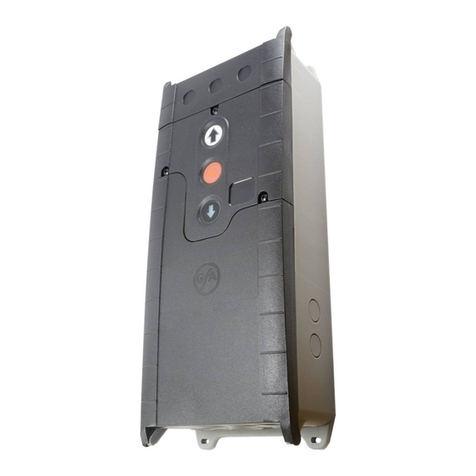
GFA
GFA TS 971 operating instructions

Burkert
Burkert 5281 EV operating instructions
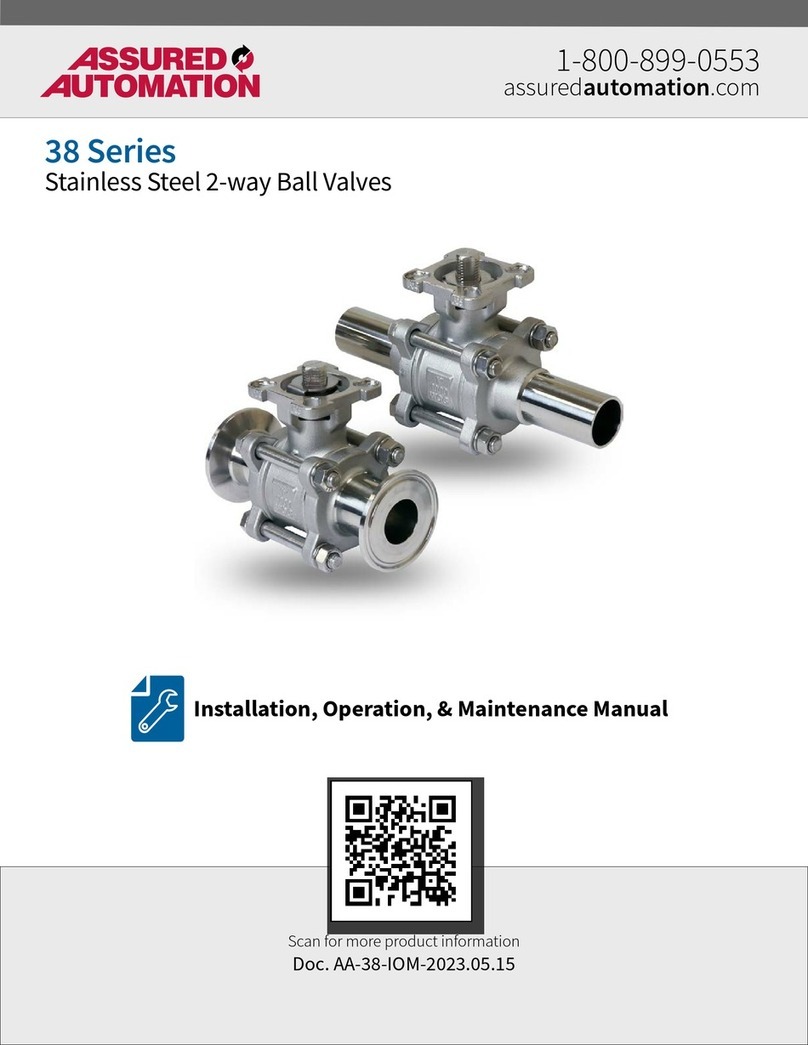
Assured Automation
Assured Automation 38 Series Installation, operation & maintenance manual
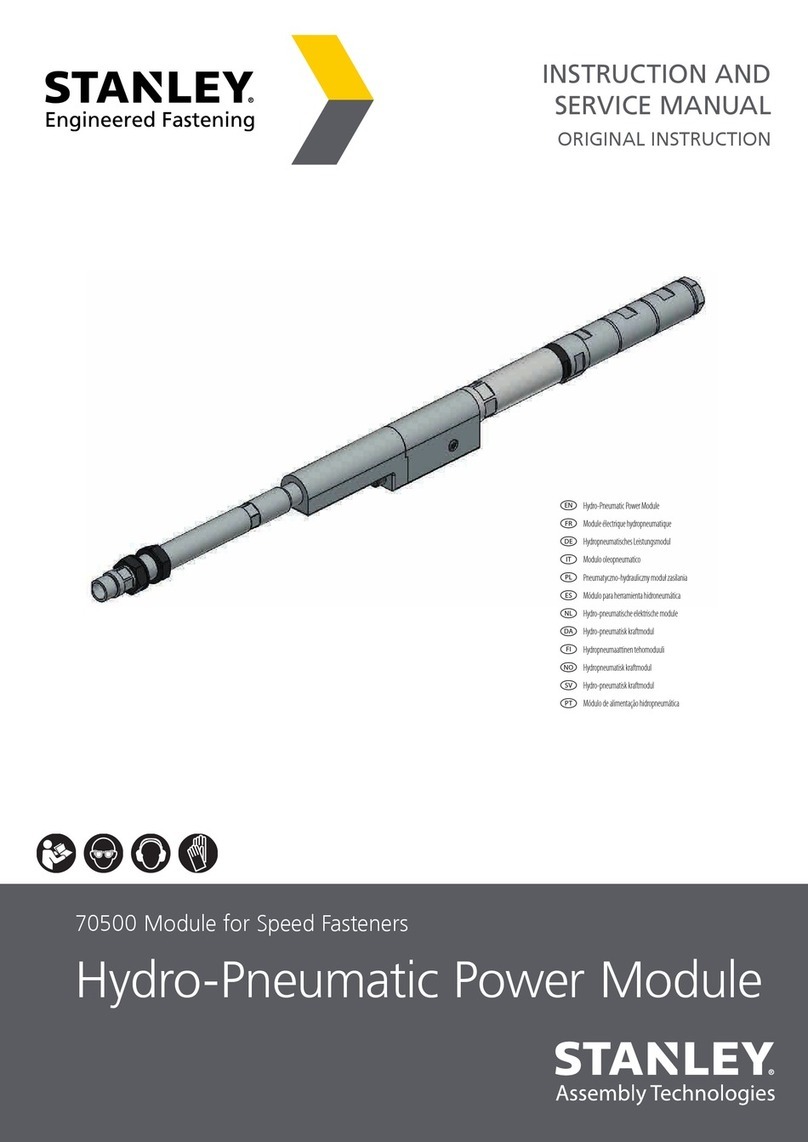
Stanley
Stanley 70500 Instruction and service manual

VAT
VAT 203 Series Installation, operating, & maintenance instructions
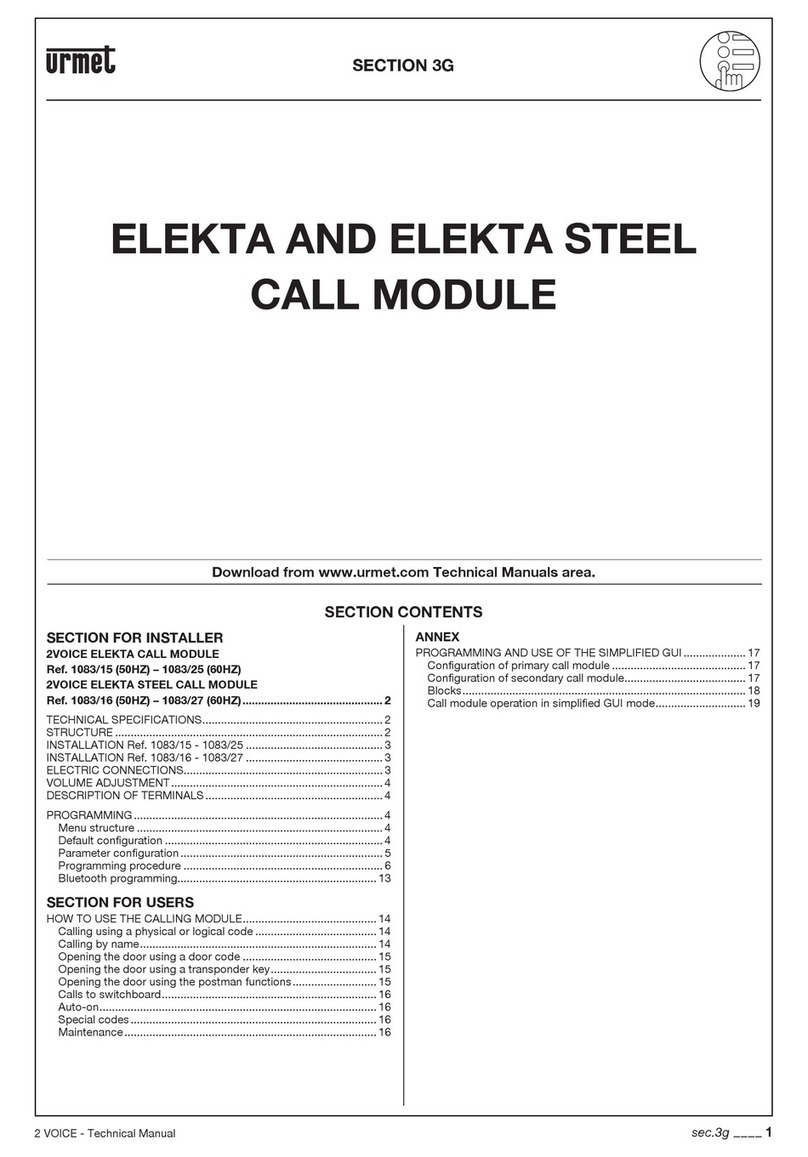
urmet domus
urmet domus elekta manual
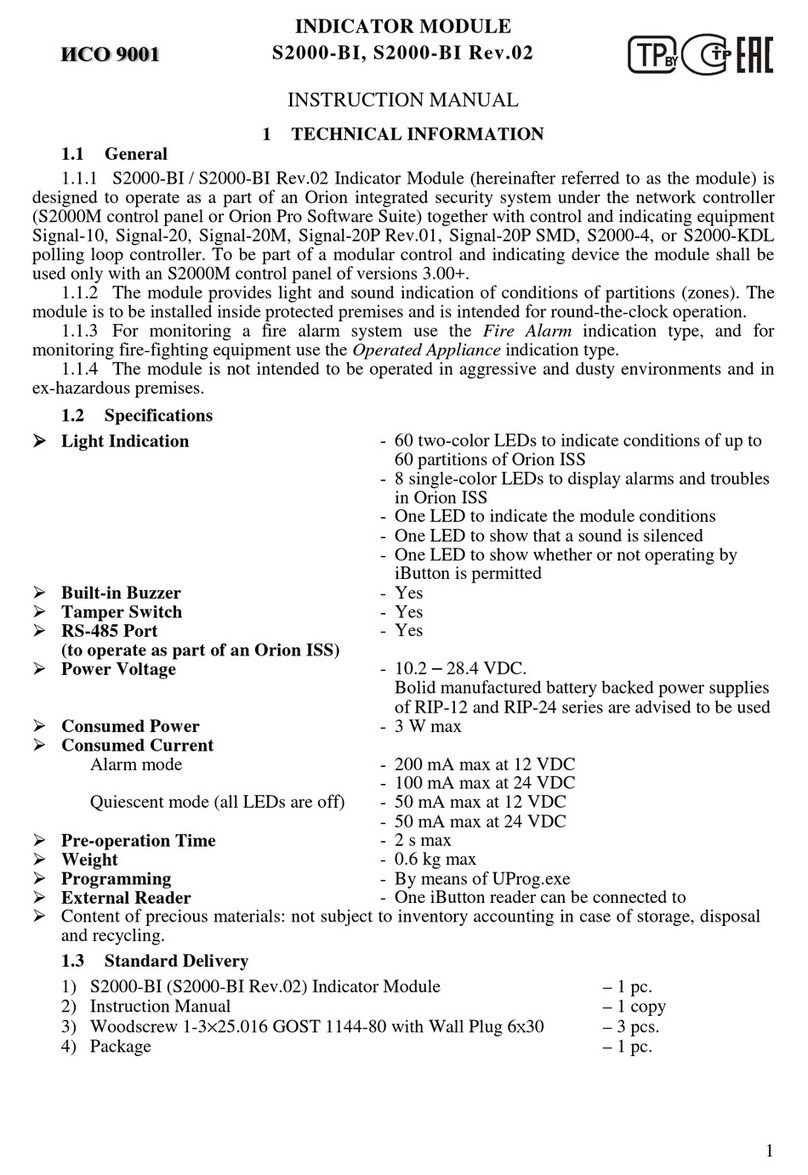
bolid
bolid S2000-BI Rev.02 instruction manual
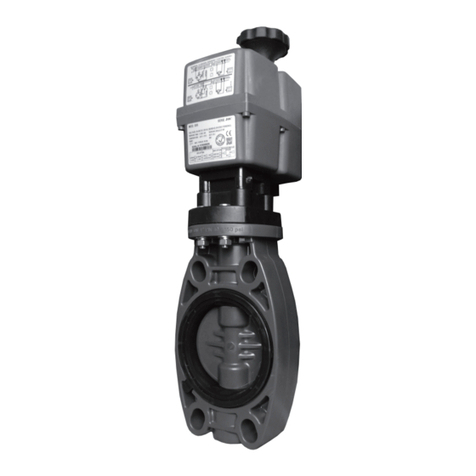
Cepex
Cepex STD Installation and maintenance manual
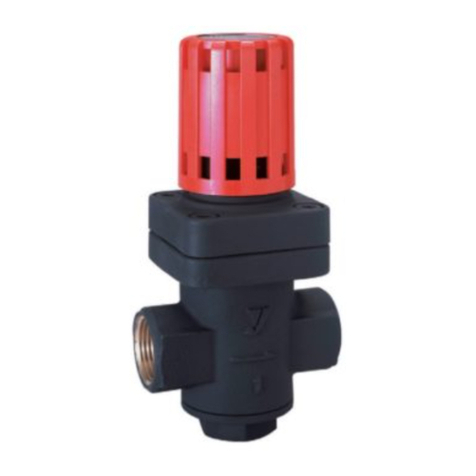
Yoshitake
Yoshitake GD-30 Installation & operation manual
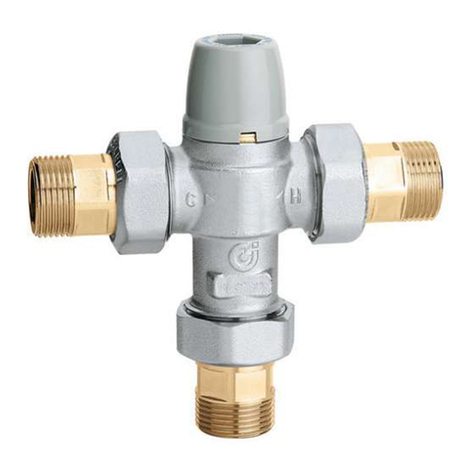
CALEFFI
CALEFFI 521352A Installation and commissioning manual

Mitsubishi Electric
Mitsubishi Electric Q06CCPU-V-H01 user manual
